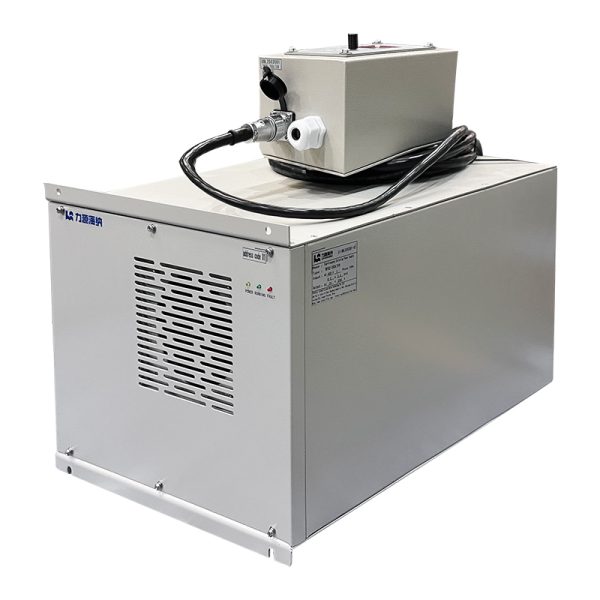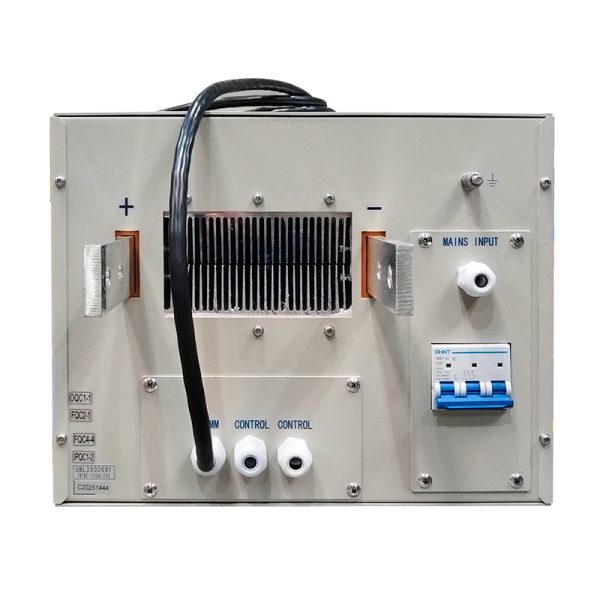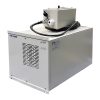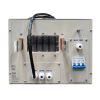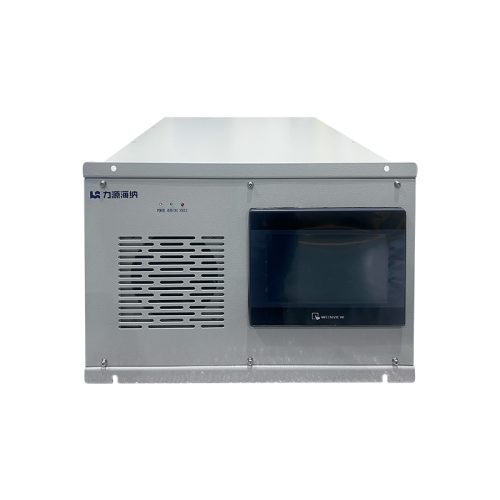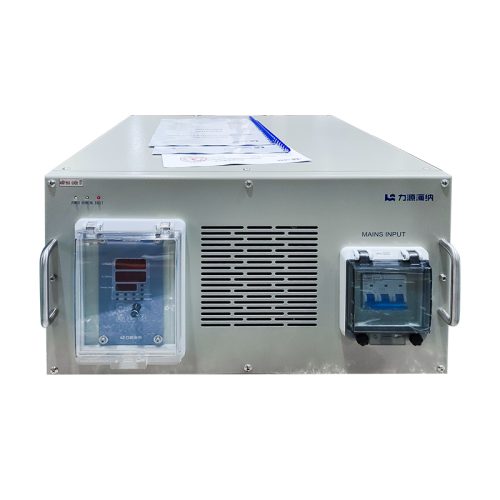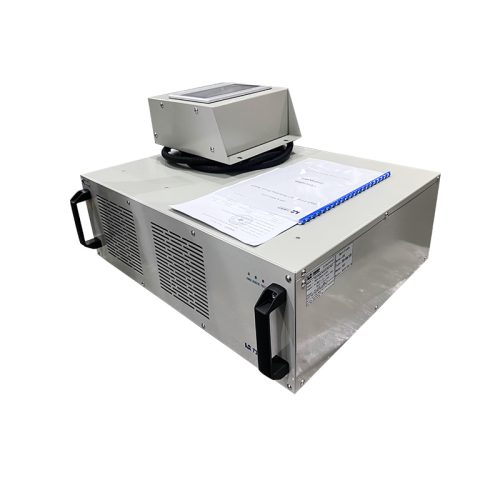» Product Description
In a 350a 6v dc industrial electroplating rectifier power supply, after the AC input voltage is filtered by a rectifier circuit, high-voltage DC power is obtained. The “variable frequency conversion” stage inverts this high-voltage direct current into approximately 30kHz high-frequency alternating current. This high-frequency AC is then transformed into secondary voltage via a high-frequency transformer and filtered through a high-frequency rectifier circuit to produce the required output voltage. The electroplating rectifier power supply employs a control circuit to sample output voltage and current. These sampled signals undergo closed-loop feedback to generate pulse width modulation (PWM) signals, which regulate the inverter circuit and maintain stable output voltage/current – a critical requirement for precision electroplating applications.
» Product Applications
Manufacturers widely use electroplating rectifier equipment for various surface treatment applications, including PCB electroplating, hard chrome coating, copper plating, nickel plating, zinc plating, gold plating, tin plating, and silver plating, among other metal finishing.
1.Field application diagram:
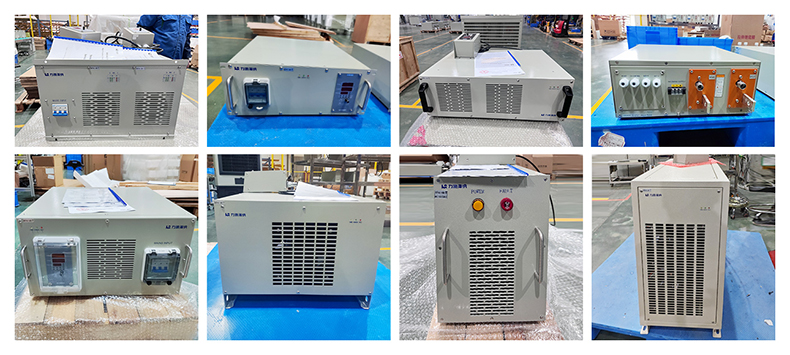
2.Industry application examples:
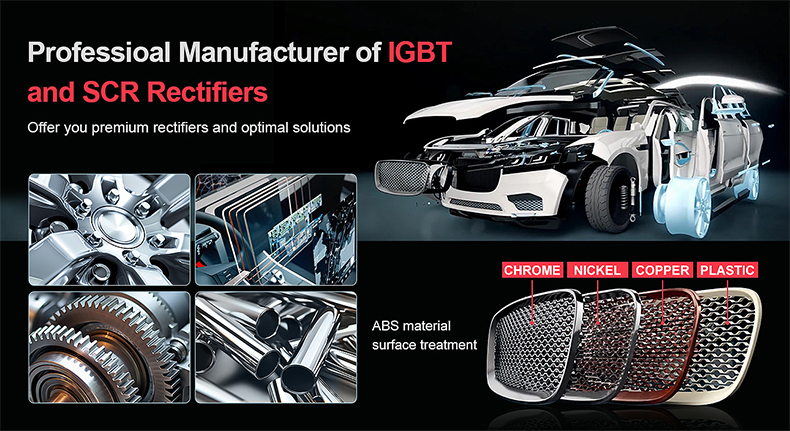
» Technology Advantages
› Modular parallel connection
› Optional N+1 redundant backup
› Capable of online hot maintenance
› RS485 digital control function
› Low-voltage MOS tube rectification
› High power factor, high efficiency
› Reasonable structural design
› Effective sealed isolation
› No water joint design inside the unit
› Practical and effective multiple protection system
› Full soft switch technology
› High reliability
› Low noise, high protection level
» Role of electroplating
Electroplating addresses core industrial challenges through tailored surface engineering:
Corrosion mitigation – Zinc deposition on steel fasteners creates sacrificial anodic protection in marine environments, delaying structural failure.
Abrasion management – Hydraulic cylinder rods utilize hard chromium deposits (≥800 HV) to withstand particulate wear in mining equipment.
Surface aesthetics – Luxury watch cases employ 5μm gold plating over nickel undercoats for corrosion-resistant luster.
Electrical performance – High-frequency PCB vias rely on electroless copper for uniform conductivity in multilayer boards.
Joining reliability – Automotive ECU connectors use matte tin finishes to maintain solder joint integrity after thermal cycling.
Asset preservation – Worn turbine shafts are rebuilt with engineered nickel-cobalt deposits, restoring OEM tolerances.
Extreme environment adaptation – Jet engine combustor liners incorporate diffusion-modified nickel aluminide coatings for oxidation resistance at 900°C+.
» Types of electroplating
› Copper Plating
Primarily applied to improve substrate adhesion for subsequent plating layers while enhancing corrosion resistance. Requires protective topcoats due to oxidation concerns—unprotected copper forms non-conductive patina over time.
› Nickel Plating
Serves as a functional base layer or decorative finish, offering excellent corrosion and wear resistance. Electroless nickel variants approach chrome-level durability. Note: Magnetic properties restrict usage in sensitive electronic components (e.g., RF connectors) where signal interference must be avoided.
› Gold Plating
Preferred for critical electrical contacts where stable impedance and optimal signal transmission are essential. Though highly reliable, material costs limit large-scale applications.
› Palladium-Nickel Plating
Superior wear resistance and signal stability vs. gold plating.
Combines palladium’s oxidation resistance with nickel’s structural integrity for high-cycle connectors.
› Tin-Lead Plating
Historically favored for solderability enhancement. Now largely discontinued due to RoHS regulations; modern replacements include pure matte or bright tin formulations.
› Silver Plating
Delivers maximum electrical conductivity and signal performance across high-frequency applications. Maintains functionality when oxidized but requires anti-tarnish treatments due to surface darkening. Premium cost reflects performance advantages.
› Selection Considerations
Specify plating type according to:
Required corrosion/wear resistance thresholds
Electrical performance parameters
Budgetary constraints
Environmental compliance requirements
Long-term maintenance considerations
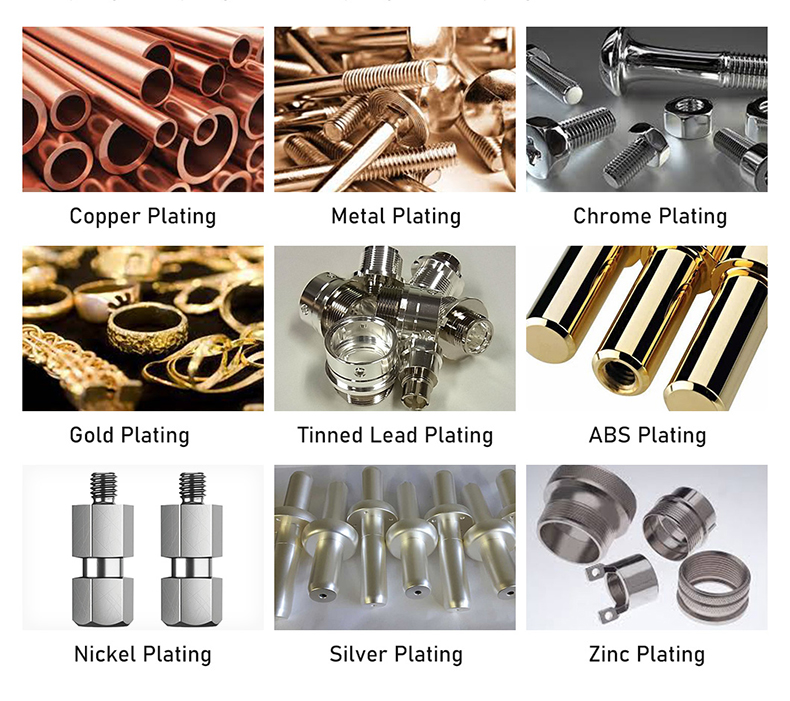
» Elements of Electroplating
› Cathode
The object to be plated (e.g., connector terminals or metal surfaces) where metal ions deposit into a solid coating.
› Anode
Soluble Anode: Made of the plating metal. Dissolves during electrolysis to replenish metal ions in the solution.
Insoluble Anode: Used for precious metals (e.g., white gold, iridium oxide). Does not dissolve but supplies electrons for reduction.
› Plating Solution
Contains ions of the target metal. Composition and concentration determine coating thickness, adhesion, and appearance.
› Plating Tank
Materials: Must resist corrosion and temperature fluctuations (e.g., polypropylene, titanium alloys).
Role: Stores solution and maintains stable plating conditions.
› Rectifier
Converts AC to DC power to drive electrolysis.
Adjust voltage/current to control deposition speed and coating thickness.
› Auxiliary Equipment
Filters: Remove impurities from the solution.
Heaters: Maintain solution temperature.
Stirrers: Ensure uniform mixing.
» Component Part for Electroplating
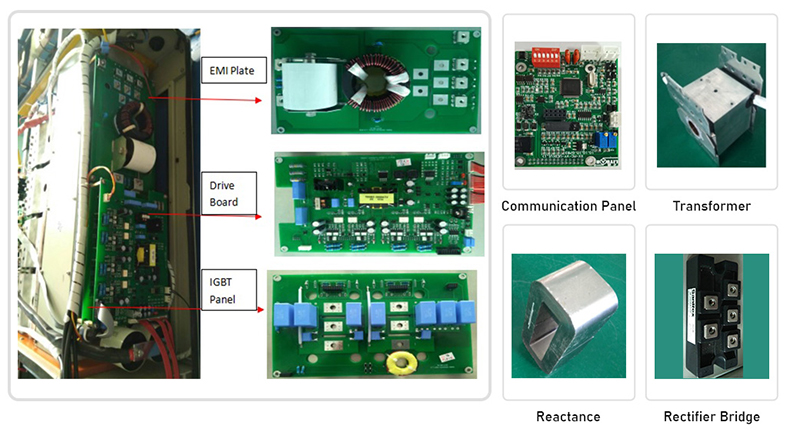
» Cooling Type for Electroplating
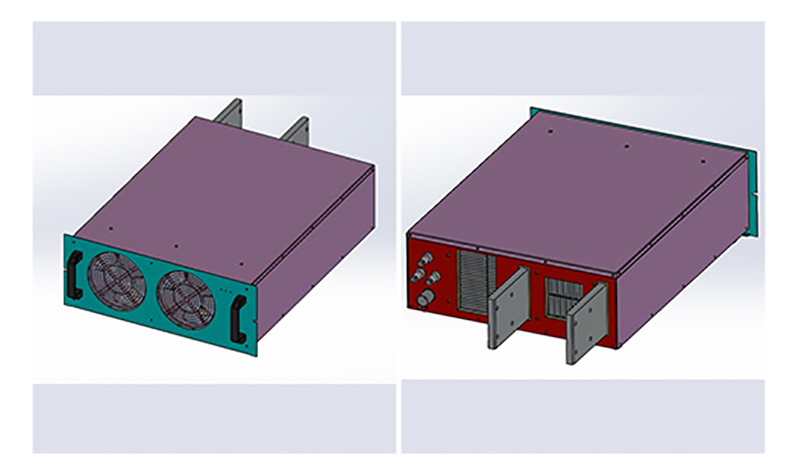
Air Cooling:Heat dissipation fan + air duct + comb heat sink

Water Cooling:Built-in water circulation line
» Technical Parameters
| Attribute type | Parameter items | Technical requirements | |
| Input characteristics | Rated input voltage | Single-phase AC 220V ± 10% 50Hz
In line with the national power quality standards |
|
| Rated input current | AC 11.0A | ||
| Rated input power | 2.4KVA | ||
| Rated input power factor | COSΦ≥0.95 | ||
| Output characteristics | Output voltage | DC 0~6V adjustable | |
| Output current | DC 0~350A adjustable | ||
| Steady current precision | ≤1% | ||
| Steady voltage precision | ≤1% | ||
| Display accuracy | 1A,0.01V | ||
| Rated output efficiency | ≥91% | ||
| Insulation characteristics | Insulation resistance | Input-output: ≥ 5MΩ | |
| Input-chassis: ≥ 5MΩ | |||
| Output-chassis; ≥5MΩ | |||
| Protection characteristics | It has self-protection function under abnormal conditions such as overvoltage, overcurrent, overload, short circuit and overheat | ||
| Other characteristics | Noise | ≤75dB | |
| Operating status | Continuous full load operation of the product | ||
| Load grade | Grade II | ||
| Insulation grade of transformer | Class B | ||
» Solution
Liyuan will keep up with the world’s latest technology closely, and uphold the concept of providing customers with high-quality power supplies and professional integrated services.
With advanced design and rich experience in rectifier manufacturing, we will provide the best power solutions as well as the most stable and efficient power supply for users both at home and abroad.
» Technical Capability
LIYUAN rectifier is the most competitive brand in China
Company relies on strong technology research and development cooperation basis, created a number of advanced technology, in recent 3 years amounted to more than 30 to apply for a patent, which has nearly 10 patents of invention.
Equipped with the national electric power transformation and control engineering technology research center (branch), and has set up a loan enterprise academician workstation.
Strict implementation of ISO quality management system, and through the CE safety certification, has been implementing ERP management for many years, to achieve the network, systematic computer control, the formation of a standard, efficient modern management system.
» Qualification certification
Liyuan adhere to innovation and the continuous improvement of power conversion efficiency and product quality.
The increasing R&D investment every year, and cooperation with China’s well-known universities, we has established the research center of national electric power conversion and control engineering technology.
Especially the related core patents of high-power synchronous rectifier power supply, stay ahead of the whole industry in China.
The ISO 9001 quality management system has been fully implemented in Liyuan, including quality inspection of components in warehouse, production process inspection, and final product inspection.

We adopt advanced scientific quality management system and the most stringent testing methods in the whole process to ensure the stability and reliability of products.
» Service
› Packing
1.Small size rectifier packing in carton box separately.
2.Large size rectifier will be packed in wooden case.
3.We guarantee that all the packing is intact when it reaches its destination.
› Shipping
1.30-45 Days after payment.
2.Transport: DHL, FEDEX, UPS, Air shipping, Boat shipping
3.You may choose our shipping partner or your own partner.
› Maintenance
We are pleasant to share our theory and experience on equipment maintenance with users.
We are pleasant to interact with users to collect their tips and know-hows on equipment maintenance.
The module “Maintenance” here is intended to help users solve various problems they possibly encounter during equipment maintenance…
If you need other power electroplating rectifiers, we can custom design them according to customer requirements. Please contact us.
Seeking 350a 6v dc industrial electroplating rectifier power supply? Liyuan Haina Rectifier, a professional manufacturer with 27+ years specializing in industrial rectifiers, supplies global clients including the United States, Canada, Britain, Italy, Spain, South Africa, Russia, Germany, Japan, South Korea, Malaysia, etc. Our advanced factory delivers cost-effective Made-in-China solutions, with competitive prices and customizable options. Contact us for sales inquiries.


